Pansies are beautiful flowers that come in various colors and make your garden look bright. But you have to give them proper attention to keep your garden colorful for a long time. One of the common problems that can ruin your pansies is pest infestation.
Pest infestation is not unusual in plants. They suck out all the nutrients from the pansy plants and make the plant unhealthy and weak. Some pests even feed on the leaves and flowers of the plants and make them lifeless.
So, in this article, we shall learn how to get rid of pests on pansies.
Pesticides, neem oil, and insecticidal soaps are effective ways to eliminate pests on pansies. Dilute the solution as per the instruction on the label and spray your pansies leaves, stems, and flowers to eradicate any possible pests. Also, provide adequate water and light to the plant.
The primary reasons for pest attacks on pansies are poor watering techniques, low light levels, lack of air circulation, damp conditions, etc. The best way to identify pest infestation in your plants is through daily observation.
Today, in this article, we will be talking about the different types of pests that attack the pansies, different ways to get rid of these pests, and how to prevent pest infestations.
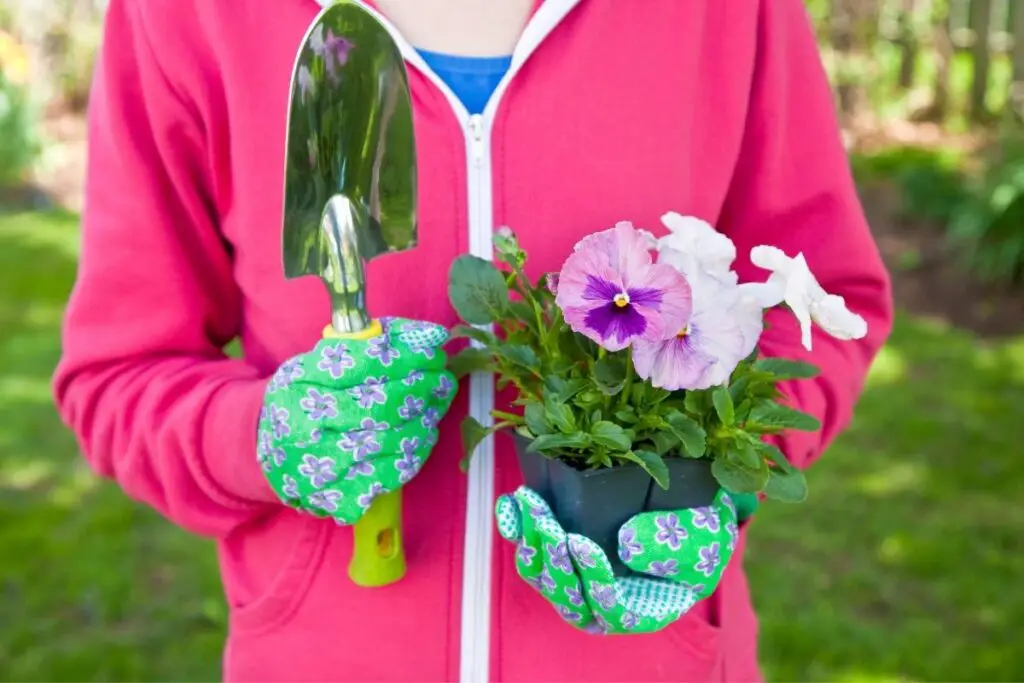
Common bugs and pests in pansies
Many pests and bugs can feed on your pansies. Some of them are:
- Aphids
- Spider-mites
- Mealybugs
- Caterpillars
- Thrips
- Whiteflies
To identify the pest, you need to watch the symptoms that your pansies are giving out.
Aphids
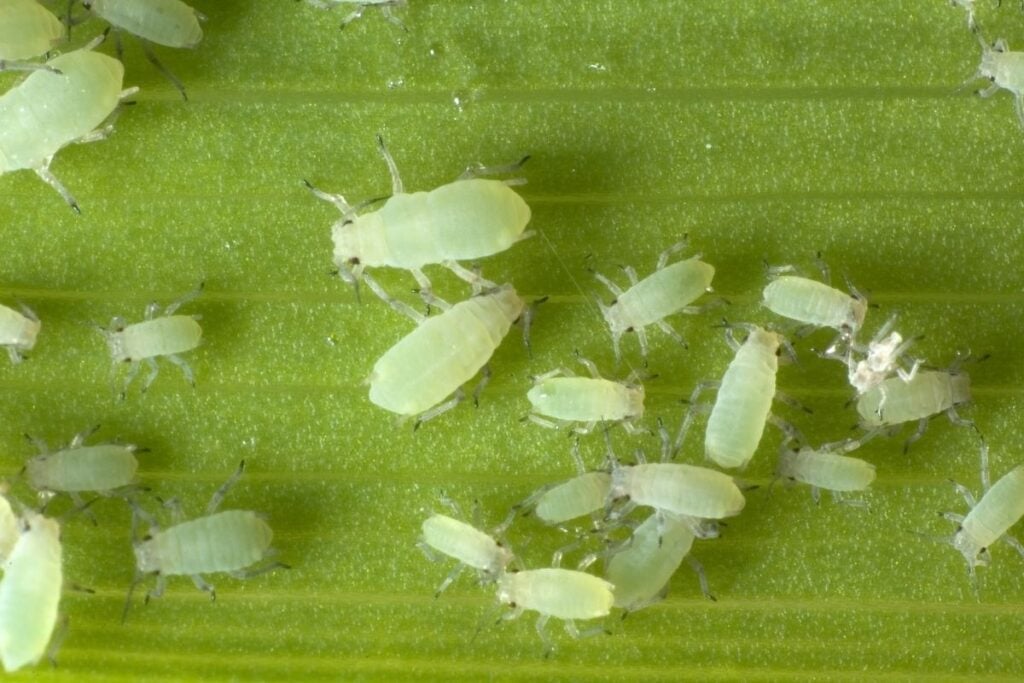
These are small, soft-bodied insects that you can find in every flower garden. They feed on the plant tissues and suck out all the essential nutrients from the plants.
These are fast-growing pests. If no steps are taken, they will quickly multiply, and you will soon notice a larger group of aphids, which will damage the whole plant, making it weak and lifeless.
Identification
- Aphids are very tiny insects and are mostly not visible to bare eyes.
- They can be seen in different colors like white, yellow, light green, brown, and pink.
- The adults are under ¼ inch.
- The nymphs look more or less the same as adults.
- Adults are wingless, but some species can grow wings.
Signs
The probable signs of aphid attack on pansies are:
- Yellow leaves
- Leaving honeydew on the leaves and stems
- Twisting and curling of the young leaves and stems
- Wilted leaves
- Deformed flowers
Spider mites
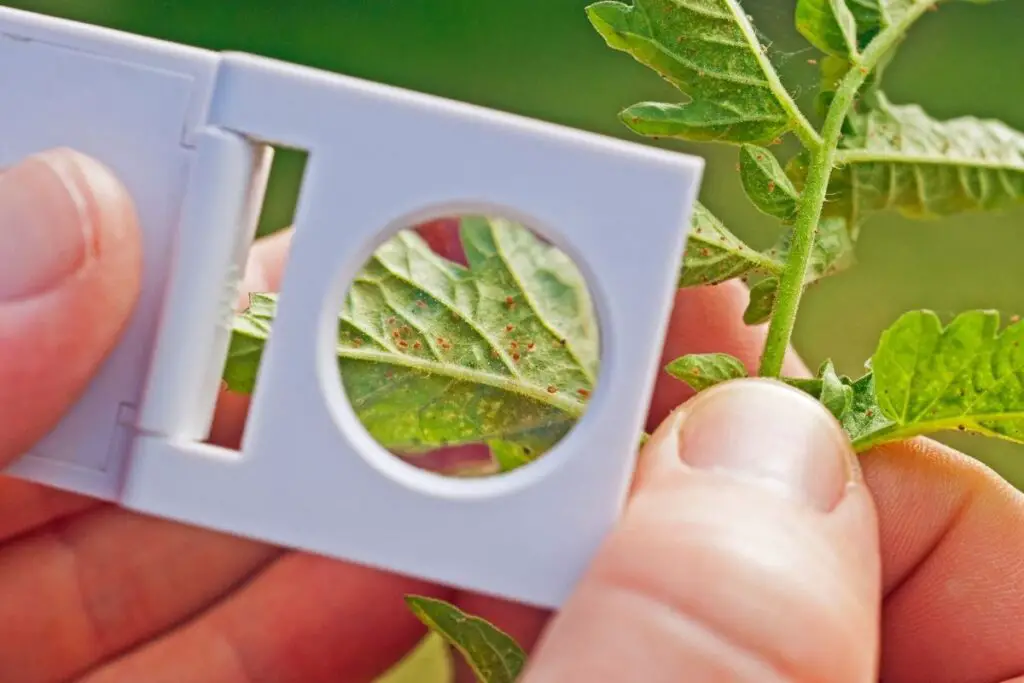
Spider mites are very small in size, and you might need a magnifying glass to see them. Like the aphids, they feed themselves with the nutrients of the plants, thus making the plant unhealthy.
Identification
- Piercing mouthparts
- Cream-colored bodies
- You will notice two spots on the back of the adult mites.
- Found under the leaves
- When larger in quantity, you will notice them on top of the leaves.
- A closer look will show you tiny minor webs.
Signs
The symptoms of spider mite attack are:
- Tiny spots on the leaves
- Leaf discoloration, like white, pale green, or yellow
- Webs on the leaves
- Chlorosis
- Brown or yellow dots on the leaves
Mealybugs
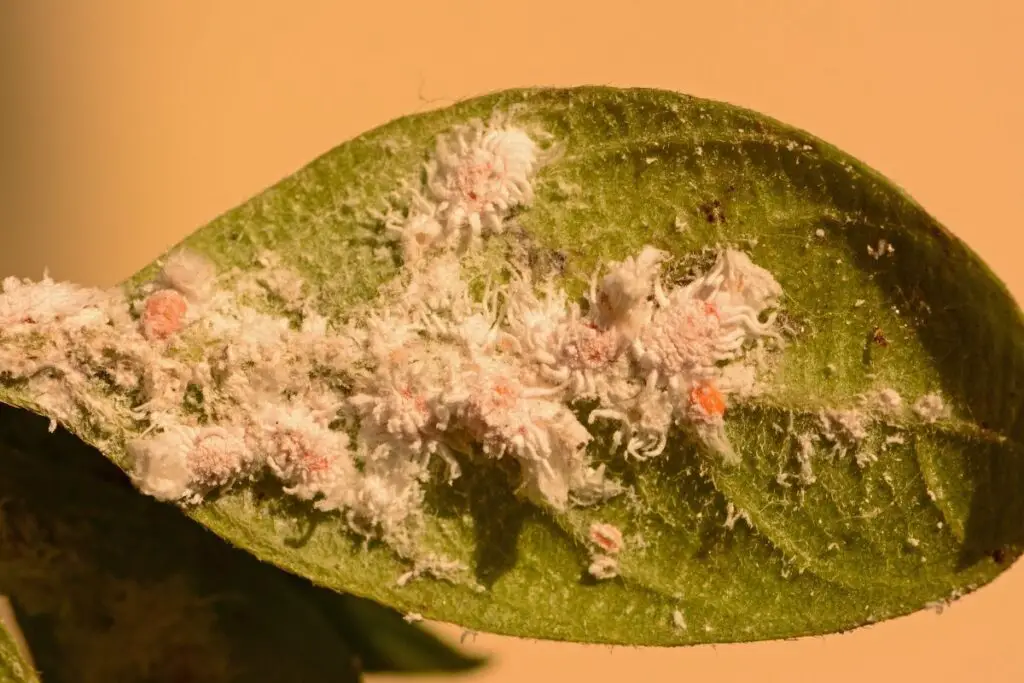
Mealybugs are tiny white bugs that feed on the tip of the stems in pansies. It looks like white fuzz on the leaves.
Identification
- Flat and waxy body
- Different colors like yellow, orange, or pink
- It looks like cotton spots
- Wingless insects
- Segmented, oval-shaped body
- One centimeter long
- Male adults have wings, look like tiny flies
Signs
The signs of mealybug attacks are:
- Wilted and curly leaves
- Stunted growth
- Chlorosis
- Defoliation
- It also produces honeydew in the leaves
Caterpillars
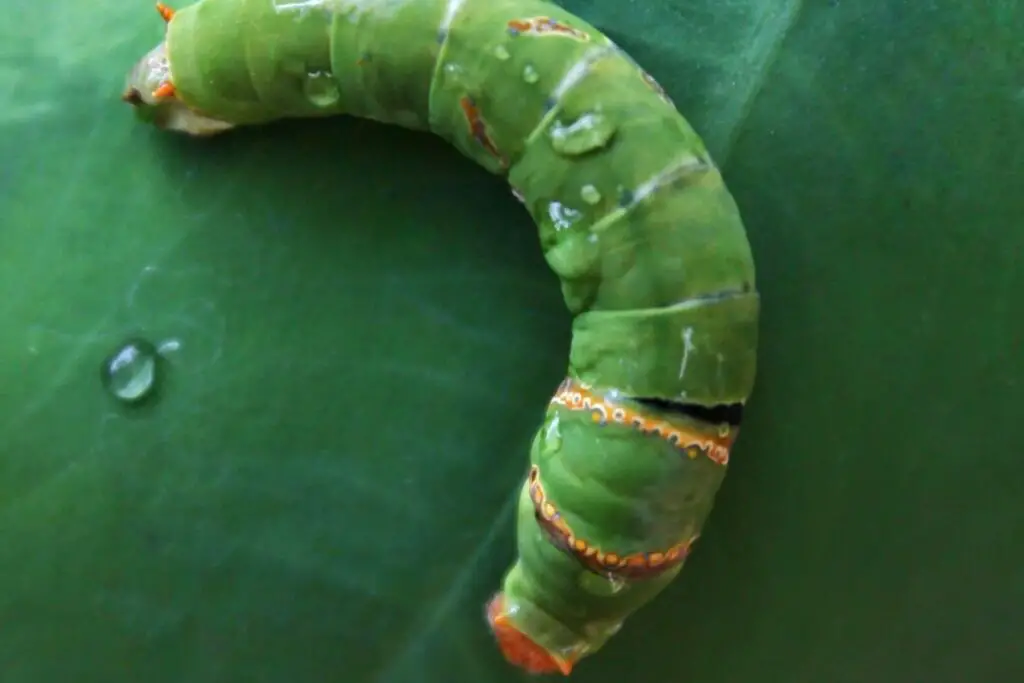
One type of caterpillar that feeds on the pansies is a cutworm. These pests munch on the pansies. They have a huge appetite. They chew the leaves and flowers of your pansy plant and leave them in a torn and ragged condition.
Identification
- Muted stripes along the body
- Curl up in C shape
- It varies in different colors
- Soft bodies insects
- Mostly gray or dull brown
Signs
- Torn and ragged leaves
- Holes in the leaves
- Foliage feeding results in stunted growth of the plant
Looking for gardening supplies? We have tested 100's of products before recommending them to you guys. Check out our best pick below:
| Image | Gardening Supplies | Best Price? |
|---|---|---|
 Top
Top Top
Top | Raised Garden Bed Kit | Check On Amazon |
 | XLUX Soil Moisture Meter, Plant Water Monitor, Soil Hygrometer Sensor for Gardening, Farming, Indoor and Outdoor Plants, No Batteries Required | No Results |
 Top
Top Top
Top | 82 Pcs Garden Tools Set and Extra Succulent Tools Set | Check On Amazon |
 | Joeys Garden Expandable Garden Hose with 8 Function Hose Nozzle, Lightweight Anti-Kink Flexible Garden Hoses, Extra Strength Fabric with Double Latex Core, (50 FT, Black) | No Results |
 Top
Top Top
Top | Dual Chamber Compost Tumbler | Check On Amazon |
 Top
Top Top
Top | Sunnyglade Plant Stakes | Check On Amazon |
 Top
Top Top
Top | Organic Cold Pressed Neem Seed Oil | Check On Amazon |
 Top
Top Top
Top | Mighty Mint Gallon :-Insect and Pest Control Peppermint Oil | Check On Amazon |
 Top
Top Top
Top | Scotts DiseaseEx Lawn Fungicide | Check On Amazon |
 Top
Top Top
Top | Jacks Classic 20-20-20 All Purpose Fertilizer | Check On Amazon |
 Top
Top Top
Top | 30,000 Seeds Pollinator Attracting Wildflower Mixture | Check On Amazon |
 Top
Top Top
Top | Survival Vegetable Seeds Garden Kit-Over 16,000 Seeds | Check On Amazon |
Thrips
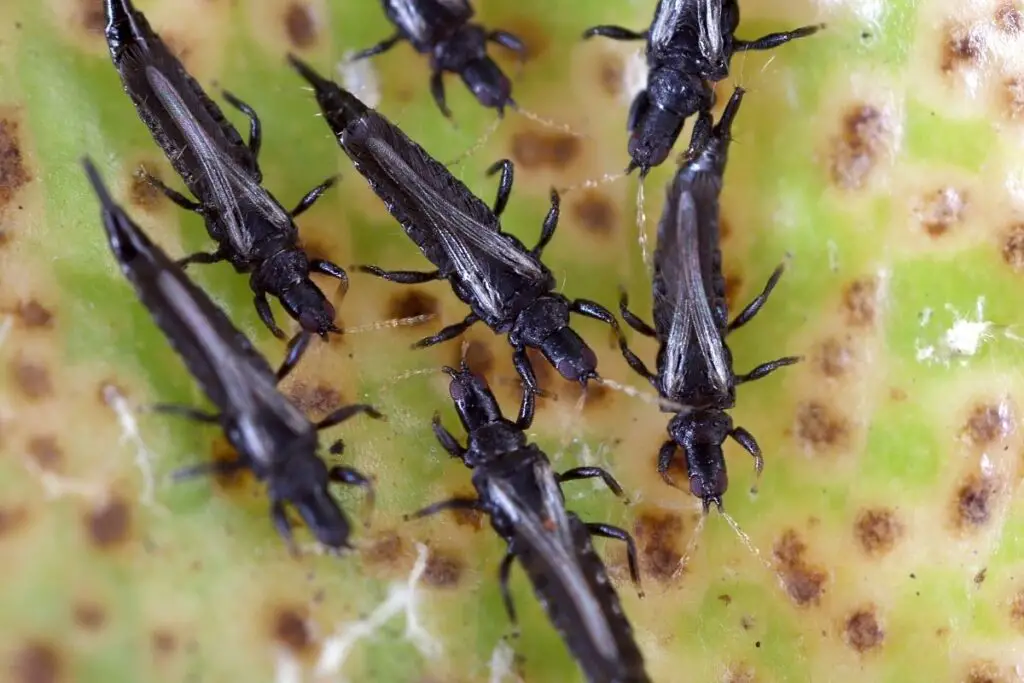
They are tiny, slender insects about 1-2 millimeters. They are sap-sucking insects. They feed themselves with the nutrients of the plant, thus turning the plant weak.
Identification
- Looks like needle
- Narrow-bodied
- Two pairs of fringed wings and six legs
- Different colors like black, brown, or yellow
Signs
- White mottled appearance on the leaves
- Browning of the petals
- Dropping flowers
Whiteflies
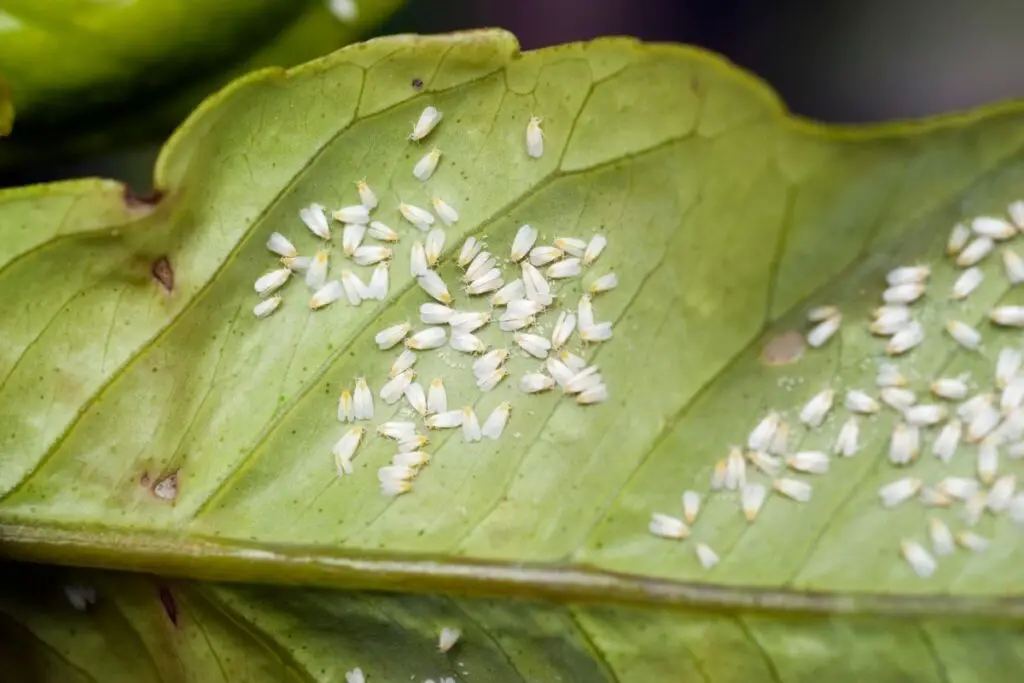
They feed on the pansies in both adult and nymph stages. Just like the aphids, spider mites, and mealybugs, whiteflies too are sap-sucking pests that suck all the saps your pansy plant.
Identification
- Flat, clear, and less than 1/6 inch wide
- Found mostly under the leaves
- Powdery insects with four white wings
Signs
- Discoloration of leaves
- Accumulation of honeydew
- Slow and slimy pests
Snails and slugs
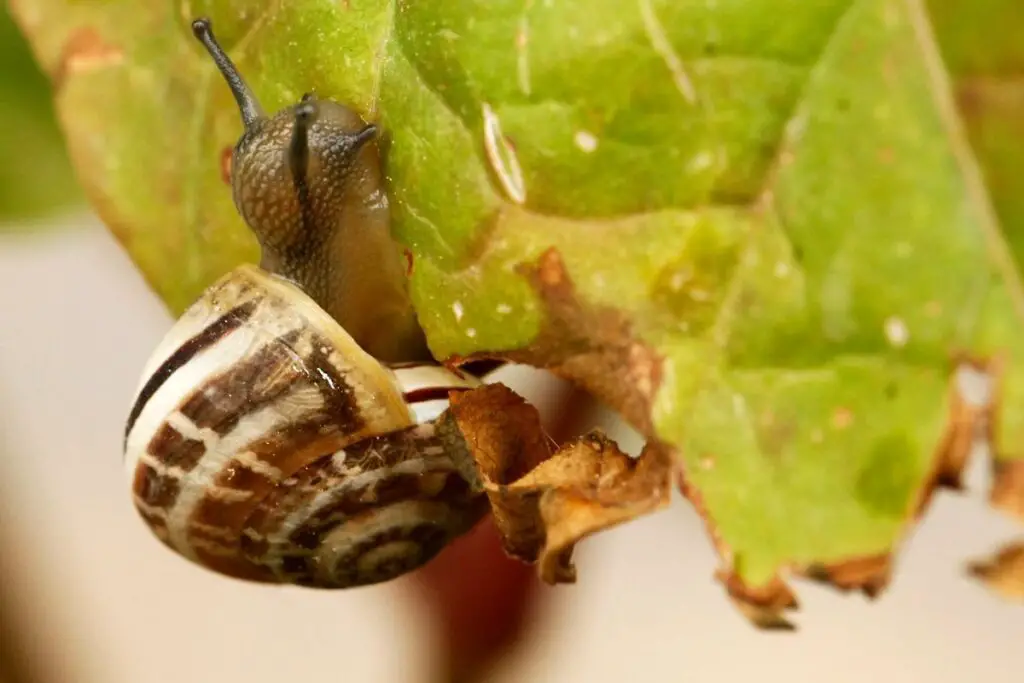
Snails and slugs eat the flowers and flower buds of the pansies and create holes in the flowers and the leaves. They attack primarily during the night. The mucus trails in the plants indicate that they are attacking the pansy plant.
Use your hands (gloves recommended) to remove the mulch from underneath the pansies. That is the place where these slugs and snails are hiding. Loosen the soil and pour a little bit of water. This will make them come out of their hiding place.
Insert some food cans filled with beer around the pansies until their tops are leveled with the soil. This will attract them and make them fall in the cans and drown. Empty your cans every day. Continue the process until there are no snails and slugs left.
Other pests
Another pest that can affect the pansy plant is the flea beetle. They feed themselves with pansy flowers and leaves.
Why do pansies attract bugs?
There are many reasons due to which pansies get attacked by pests.
Humidity level
Pansies enjoy growing in full sun and don’t enjoy wet weather. High humidity is not favorable for pansies. Thus, your pansy soil bed must have a sound drainage system.
If your pansies fail to drain excess water, that will keep the soil bed moist, and it will be an ideal condition for pest infestation in your plant.
Air circulation
Pansies grow well with aerated soil. Soil with a proper drainage system will help the roots have flexible and easy air circulation. It is vital to choose an ideal place for planting pansies.
If the soil doesn’t possess enough airflow, that might suffocate the roots, affect the plant, and make the plant ideal for pest infestation.
Also, ensure that your pansies have enough space around them for proper airflow. Good airflow will keep all kinds of pests and fungus away from the plants.
Watering technique
Overwatering and under watering both can cause pest attacks. If you overwater your pansies, your plant will remain in a damp environment, which will be favorable for all kinds of pests, especially snails and slugs.
Overwatering will also lead to fungus infections in your plants.
Underwatering your pansies will make them weak and dry. Dry weather is also favorable for some insects and bugs.
You must water your plant regularly. But before every watering session, you should let the soil dry up a bit. If you water your plant even after the soil is in wet condition, that will cause overwatering.
You should appropriately maintain the break in between watering. Do not let the soil dry up too much. Check the soil. If the soil sticks to your hand, it means your pansies don’t need much water. If the soil is a little dry and doesn’t stick to your hand, then it’s time to water them.
Also read: How Much Water Does A Pansy Need? (Pansy Water Requirements)
How to get rid of pests on pansies?

As soon as you realize that pests have attacked your plant, you need to take immediate steps to stop them from growing and spreading.
There are natural, environment-friendly, and chemical ways by which you can get rid of pests from your pansies. Let us discuss this in detail.
Prune the infected parts
First, remove the affected parts from the plants. This will prevent the spread of pests in other parts of the garden. Dispose of the infected parts entirely.
After doing this, you should sanitize those parts of the plants from where you have removed the infected flowers and leaves. This will disinfect the area and prevent other problems.
Wash the plant well
After pruning the infected leaves and flowers, you will need to give your plant a good shower. This will wash away all the remains of the insects and bugs.
Keep the force a little more so that the plant gets washed well. But do not give extreme force as that might harm your pansies. Wash well and let it dry.
Neem oil
Neem oil (Check this one on amazon) is one of the best solutions to treat pest infestation. After pruning and washing, you can apply some neem oil to the leaves whenever you detect the problem.
After application, do not wash the plant. Let it remain on the leaves and flowers for some time. This will help to recover your plant well.
Insecticidal soap
If the natural ways of pest treatment fail, you can use insecticidal soap (Check this one on amazon). You can buy this product in readymade spray bottles or concentrated forms.
Mix five tablespoons of insecticidal soap concentrate with one gallon of water. Pour the mixture into a spray bottle. Spray it on the pansies.
Dish wash soap
Spray generously on the surface and bottom of the leaves and stems, and flowers. Wash away after some hours as leaving in the mixture for a long time might damage the pansies. Use once every week until your pansies recover.
You can even use your household dish wash soap to treat pest infestation in pansies. The process of utilization is the same as the insecticidal soap.
It will help if you use mild dish soap in concentrates. Mix five tablespoons of the soap with one gallon of water, pour in a spray bottle, spray it on the pansies, and wash your plant after few hours. Use them every seven days until the problem is gone.
Rubbing alcohol
Alcohol is an excellent choice to treat your plants that are infested with pests.
Pour some rubbing alcohol in cotton and clean the leaves and the flowers slowly.
You can even mix alcohol with water and use the mixture to get rid of pests. Mix an equal quantity of alcohol and water in a spray bottle and spray the mixture to the plant.
You can use pesticides and miticides that are suitable for your pansies. But, before applying them to your plants, do read and follow the instructions given in the product bottle.
There is a natural way to get rid of pests, which is the use of natural enemies of pests. Ladybugs and lacewings feed on the pests. They help in decreasing the growing population of pests. The pests will be unable to get back to the pansies and harm them again.
How to prevent pest infestation on pansies?
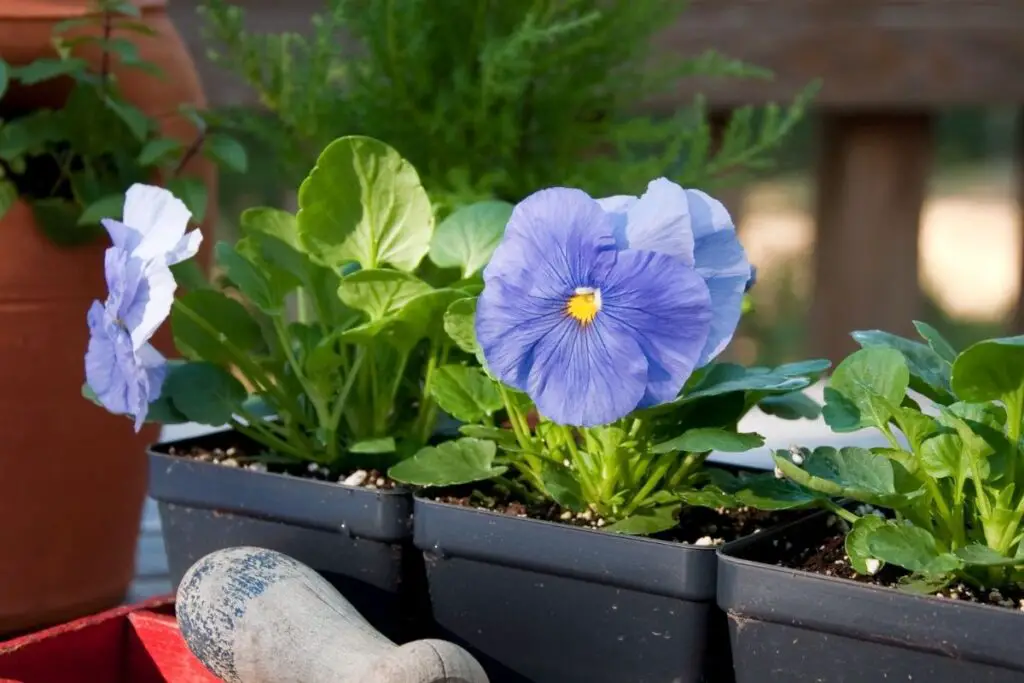
You can prevent pest infestation if you take some preventive measures for your pansies.
- Make sure your pansies are receiving enough sunlight.
- Do not overwater your pansies as excess water will attract the pests and might cause fungus infections as well.
- Avoid misting the leaves and overhead watering. Most pests stay on the surface of the undersides of the leaves. Misting and overhead watering will keep the leaves moist and damp, and pests find it an ideal stay for themselves. Water your pansies close to the soil.
- Make sure that your plant is receiving good air circulation.
- The soil of your pansy bed must be well aerated for proper airflow. Roots will be able to breathe easily.
- Take immediate steps whenever you see any symptoms of pest infestation. Early steps will prevent further pest attacks.
- Do not ignore your plant. Observe the daily changes of your plant. This will help you to know the pansy problems early.
- Keep your garden and the flower soil bed clean. Remove all kinds of plant debris, wastes, and weeds from your garden as those places can be hiding places for insects and bugs.
- Try not to stress your plant with poor watering schedules.
Final words
Growing pansies in your own space mean they are not in their natural habitat. Give good attention to your plant. Do not neglect your plant.
Consider a daily observation of pansies. This will let you know about the changes in your plants, and you will also be able to know about any signs of infection.
Take immediate steps after noticing signs of pest infestation to prevent it from progressing.
Ref: The University of Arkansas, Britannica, Utah State University, Wikipedia, The University of Georgia, The Pennsylvania State University, The Royal Horticultural Society.
